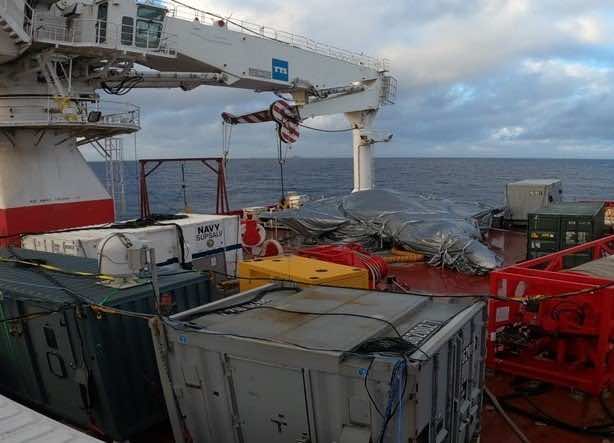The US Navy has recovered the F-35C Joint Strike Fighter from the China Sea after it was destroyed in a touchdown catastrophe on board the aircraft carrier USS Carl Vinson (CVN-70) earlier this year. After pulling the jet up from a depth of around 12,400 feet, the military recovered it. The F-35C fell into the water after attempting to land successfully on the USS Carl Vinson on January 24 while conducting “normal aircraft operations,” according to the announcement. A team of US Navy servicemen used a “remotely-operated vehicle” called the CURV-21 to attach “specialist gear and pickup lines to the aircraft” at the bottom of the ocean to rescue the debris of the fighter aircraft from “about 12,400 feet” underwater, according to the press.
The team has been working for 37 days to collect the remains. It featured personnel of the US 7th Division Task Force 75 and the Commander of Recovery and Parachuting from the Naval Sea Commander. The debris was recovered by “the diving assistance constructions vessel Picasso.” Even during the January event when the aircraft landed, seven persons were wounded, including the pilot, who escaped from the plane, and six others on board the ship. The $100 million fighter plane is the most recent addition to the Navy’s arsenal.
Following the accident, the US Navy stated that it intended to recover any aircraft wreckage from the water. The F-35C features some of the Navy’s finest sophisticated equipment, and observers believe Washington would like to keep it out of the hands of Beijing.
The Chinese Foreign Ministry, on the other hand, stated that it was cognizant that a US Navy stealth aircraft had fallen in the South China Sea but “had no concerns in their jet.” The ramp impact in the F-35C incident occurred when the aircraft contacted the back of the flight crew during touchdown and veered down the landing area before crashing into the ocean. Seven people were hurt, including the pilot, who was rescued from the ocean after ejecting. Despite the fact that the F-35C ripped off all four of the carrier’s arresting wires and left wreckage all over the deck, including clogging the catapult systems, air operations aboard the Vinson were fully up and running in 45 minutes.
Immediately after the disaster, videos provided compelling evidence of the aircraft erupting into flames as it collided with the flight deck of the USS Carl Vinson. Shortly after the incident, Navy authorities assessed Carl Vinson’s injuries as “superficial,” and the ship rapidly continued normal functioning.
Seven soldiers were injured earlier this year after an F-35C crashed landed on the decks of the aircraft carrier USS Carl Vinson during a military drill. For years, the South China Sea has been a political hotspot, with various nations claiming sovereignty of its tiny islands and reefs, and hence accessibility to its commodities. China has become increasingly aggressive in asserting its claim to ownership, failing to acknowledge a 2016 independent judiciary judgment that left open the possibility that China had traditionally maintained sole control over the seas.

